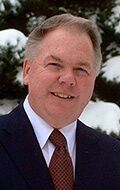How to: Key tenets that will enable nonprofits to successfully manage an endowment
 Jack Moore
Jack Moore
For some not-for-profit institutions, an endowment can serve as a rainy day fund. For others, it might be their life blood for survival. Endowments serve each institution in a unique fashion, but there are a few key tenets needed for success that any nonprofit with, or aspiring to have, an endowment needs to follow.
Structure
Structure is the key to long-term success. When referring to structure we specifically mean an Investment Policy Statement. The IPS sets a course to manage, monitor and monetize assets in a manner that is consistent with an organization's needs and strategy. The IPS also gives concise marching orders to an investment advisor and enables staff and trustees to objectively assess investment performance.
An IPS has three sections:
- It defines the roles of the staff, the board and the investment advisors. It will articulate how often the committee meets with the advisor, who (staff vs. board) conducts the advisor selection process and who serves as a fiduciary, which are people who are in a position of trust and have an obligation to act in the endowment's best interests.
- It outlines the role the endowment plays within the institution and rules for making distributions from the endowment to the institution. Such policies are critical for insuring a perpetual life for the endowment while maximizing its impact on the organization.
- The IPS codifies where the assets are to be invested and it defines the benchmark. The benchmark is the cornerstone of endowment structure as it reflects goals and the appetite for volatility. It also lays out the yardstick against which the advisor's performance will be assessed.
Our firm has helped many institutions write their IPS, and over time we have developed the following recommendations for good policy statements:
- Assume all parties can be replaced — don't write it for specific people/firms.
- Use “investable” benchmarks that represent an actual investment, versus an absolute or relative number like inflation plus 6%.
- Know how the benchmark portfolio performed in 2008 and other stressed market condition.
- Make sure distribution policies are supported by long-term expected returns.
- Define a time horizon for assessing performance. While positioning and performance review occurs quarterly, comprehensive assessments should be made by looking at investment performance through the investment cycle, such as five to eight years.
- Stick to the plan: If the plan says meet quarterly, meet quarterly.
- Define deliverables for the advisor.
Bottom line
Finally, we get many questions on forming an investment committee. While it always feels great to have local expertise on the committee, some of the best committees are comprised of well-informed, passionate people who have no professional investment experience. With the proper structure (like a concise IPS) in place, assessing advisors becomes very straightforward and there is no need to have Warren Buffett in your corner. Below are five questions that we feel every investment committee needs to ask.
- How are we positioned relative to our IPS (the benchmark portfolio)?
- What was our performance, net of fees and what was the performance of our benchmark portfolio?
- Please outline all fees we are paying, including advisor, manager, custody, trading, and any other.
- Do you serve as a fiduciary to our institution?
- Do you see any issues or obstacles that would prevent us from meeting our goals?
John P. (Jack) Moore, a certified financial analyst, is president and chief investment officer at Harpswell Capital Advisors LLC in New Gloucester.










Comments